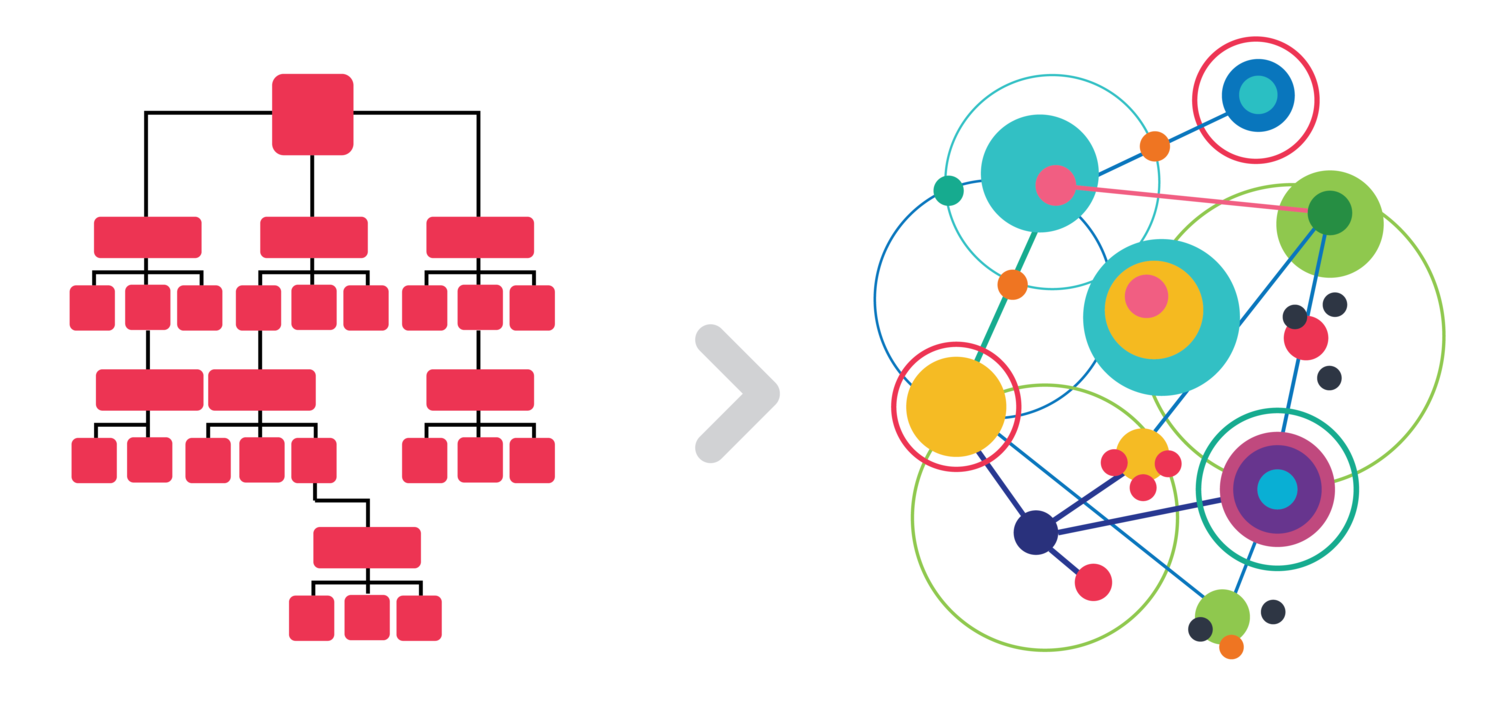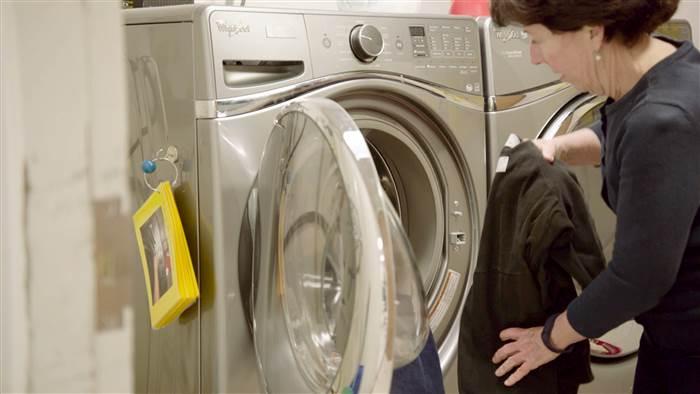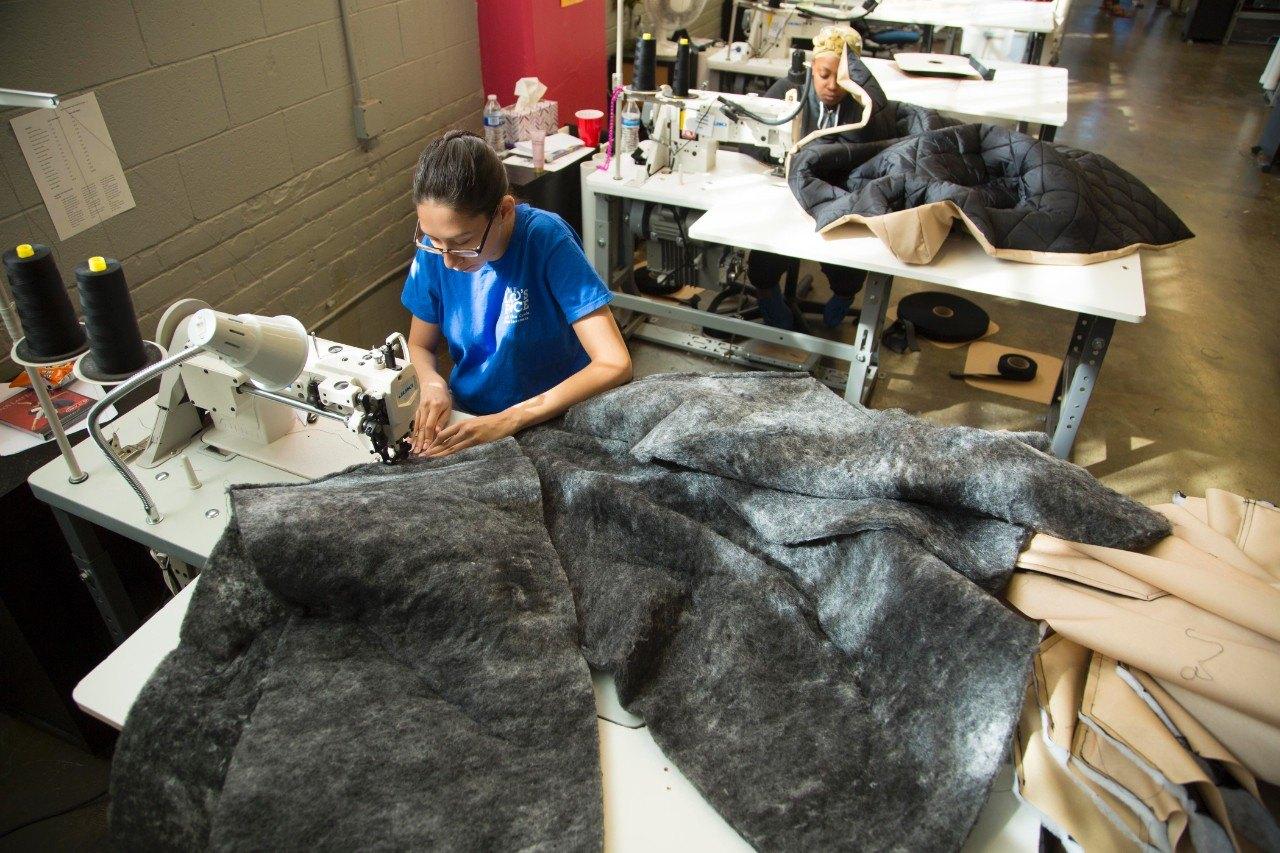Feds to Suppliers: Disclose Your GHG Emissions


The U.S. federal government is the largest buyer of goods and services on the planet, with an annual spend of over $450 billion. Scoring that government contract can result in a huge revenue boost for a company and a plum bonus for sales executives. But if suppliers and professional services firms want to continue to do business with federal agencies, they are going to have to do more than settle on a price: The General Services Administration (GSA), which serves as Washington D.C.’s chief procurement office, will soon require its suppliers to disclose their greenhouse gas emissions.
The GSA’s new policy is part of the Obama administration’s directive to federal agencies to work on reducing their carbon footprint. In an executive order signed by President Obama last year, the federal government has to find ways to decrease its total greenhouse gas emissions by 42 percent from 2008 levels within 10 years.
The largest reason why agency heads now have climate change on their task lists is because of cost. The White House says tackling carbon reductions could save taxpayers as much as $18 billion in energy costs. This shift could also boost the amount of electricity the government consumes from renewable sources such as solar and wind by 30 percent during the same time frame. To that end, government agencies now must disclose “sustainability performance plans,” which outline how they are saving taxpayers money by conserving energy, eliminating waste and slashing greenhouse gas emissions.
That is a tall order for the federal government, which at last count owns or leases 360,000 buildings, operates 650,000 fleet vehicles and consumes 129 billion gallons of water annually. But the GSA says it is on board with this agenda. The agency, which has its own sizable footprint with 12,000 employees and an annual budget of approximately $21 billion, announced last year that it would strive to reduce emissions to 54 percent of its 2008 levels over the next ten years. The agency says it has eliminated 2.3 million tons of greenhouse gas emissions over the past eight years, or the equivalent of keeping 5,000 rail cars (or 600,000 tons) worth of coal in the ground annually.
The agency employed several tactics to meet these goals, including the adoption of green building strategies. Increased purchases of clean energy, a commitment to buying more efficient cars and trucks and the embrace of net-zero energy building designs (such as the federal building in Grand Junction, Colorado, shown above) are amongst the ways GSA insists it is practicing what it preaches to other federal agencies.
The GSA is following the lead of many companies in the private sector. Corporations such as Nike and Apple claim they are require their suppliers to be more upfront about their climate change impacts. But the GSA’s new requirements for companies within its supply chain sends a huge signal to the business community, as well as state and local governments. After all, a CDP report released last year estimates that an organization’s supply chain emits greenhouse gases at a rate up to four times as much as its internal operations. And with its massive buying power due to almost half a trillion dollars in annual purchases, the GSA has the heft to drive sustainable supply chain innovation throughout the U.S., and even the world.
Image credit: Library of Congress
Enterprise Rent-A-Car Pushes Back Against Criticism Over Alliance with ALEC


Last week, Enterprise Rent-A-Car became the bulls-eye of criticism over its engagement with the American Legislative Executive Council (ALEC). Enterprise joined ALEC in its quest to curb the growing trend of rising car-rental excise taxes across the U.S.
As first reported in the Guardian, Enterprise’s paying membership with ALEC associates the company with a consortium that has written and advocated for laws curbing action on a wide array of issues, from plastic bag bans to the adoption of renewables. Organizations such as the Center for Media and Democracy, as well as publications including TriplePundit, have long called out companies that claim to tackle social and environmental challenges on one hand, while they spring for ALEC memberships that in the end strive to sabotage local and state policies.
Despite the baggage that comes with being a paid ALEC member, Enterprise refuses to budge. When a TriplePundit writer called out the car-rental giant on Twitter, the company posted this response: “Our work [with] ALEC is solely focused on fighting unfair car rental excise taxes on behalf of all car-sharing and rental customers.”
Indeed, car-rental taxes, along with other hospitality taxes such as those on hotel stays, are increasing across the country. For almost 40 years, starting with the “taxpayers revolt” that led to a cap on property taxes in California under Proposition 13, taxpayers have long resisted tax increases. Municipalities, however, found few arguments when it comes to taxing visitors, as the recent history of hotel tax increases in California shows. Whether the purpose of those taxes is to make up for budget shortfalls or to build a proposed football stadium in San Diego, these surcharges are a way to pay for new projects with little financial impact on local residents. And the reality is that cities such as New York, Los Angeles and Las Vegas get away with imposing such taxes because few visitors are going to cancel their travel plans because of a car-rental or hotel tax. Hence the data reveals that businesses can make a case that hospitality taxes are increasing at too rapid of a rate, Forbes reported.
On that point, Enterprise and other car-rental companies argue that these taxes have too detrimental of an effect on both their business and consumers’ pocketbooks. Last year, Enterprise announced its ramped-up opposition to car-rental taxes by playing the time-worn “low income” argument, citing statistics that those earning the least are paying a disproportionate share of these fees.
To that end, Enterprise has also aligned with a coalition, Curb Automobile Rental Taxes (CART), which demands that Congress pass legislation that would stop the increase of car-rental taxes across the country. Claiming that such taxes are “regressive” and “violate the Constitution,” CART argues that stalling these taxes will grow the economy and remove “barriers” to companies and consumers. Nevertheless, this organization does not specify an alternative to these taxes.
And CART is opening a can, as the unconstitutionality argument could also apply to parcel taxes, cell phone taxes and taxes on utility bills. CART is trampling on states’ rights, as well as the rights of regional governments to balance their budgets and pay for projects as they see fit in an era where services and revenues are often on the decline.
ALEC signed on to this anti-tax agenda with a resolution posted on its site last year. And therein lies Enterprise’s problems, even if the company’s alliance with ALEC is solely limited to car-rental tax policy. This organization has a history of pushing legislation written by the powerful few with little input from citizens. And it makes Enterprise look like a hypocrite for signing up with a movement that often sides with the ideas of self-government and limited federal control – unless, of course, local rule just so happens to have a negative impact on a company’s bottom line.
Image credit: Jonathan Brodsky/Flickr
Tanning Salon Owners: Obamacare Killed the Tanning Bed


Despite her ongoing email controversy and Donald Trump’s relatively tame rhetoric over the past few days, Hillary Clinton is gaining in the polls and is even putting some reliably red states in play. But there is one demographic Hillary cannot count on: tanning salon owners.
Obamacare, tanning salon owners are saying, is killing their industry. And according to a recent Associated Press investigation, there will be hell to pay when the artificially-bronzed confront the ballot box come November.
The collapse of this industry, say the salon owners, comes from the “taxable indoor tanning service” stipulation tucked into the Patient Protection and Affordable Care Act (ACA, commonly known as Obamacare). First surging in popularity during the 1980s, the tanning industry had managed to hold on, thanks in large part to the personalities in reality shows such as "Keeping Up With the Kardashians" and "Jersey Shore." But the way the tax is written into law, there is no escaping this levy. Tanners are refusing to pay the extra charge on such services, and are walking out the doors instead.
Any service that employs one or more electronic ultraviolet lamps, with wavelengths in air between 200 and 400 nanometers that induces tanning, is subjected to a 10 percent federal tax. The IRS mandates this fee even if such a facility is classified as a “qualified physical fitness facility.” In other words, if one tans at the gym, he or she is still required to pay this tax. Spray tans, topical creams or lotions, however, are exempt from this fee (just don't wear white for a few days).
The problem with tanning beds is that many public health professionals link them to skin cancer. The Centers for Disease Control and Prevention (CDC) cites many studies tying the use of tanning beds to melanoma. The Melanoma Foundation savaged the tanning industry for claiming that tanning beds are a safe source of Vitamin D. Earlier this year, a dermatology journal suggested that young women seeking that bronzed glow in tanning beds run up to a six-fold chance of developing melanoma in their lifetimes. And as mentioned in the Associated press report, the American Cancer Society urges people to avoid tanning beds, as melanoma is the second most common form of cancer found in women between the ages of 20 and 29. Estimates suggest that over 3.5 million cases of skin cancer are detected annually, more than all the other types of cancer combined.
The argument in favor of such a tax is to have the vice pay for health services, akin to tobacco taxes and the soda tax in Berkeley, California. The logic follows that such a tax can discourage those behaviors. In the case of cigarettes, and now tanning, such policies are working.
The danger politicians face is in relying on those taxes to fund programs. During the first Bush administration, for example, President George H.W. Bush agreed to tax increases in order to balance the federal budget, which fell into disarray during the Reagan administration. That reversal of Bush’s “Read my lips, no new taxes” pledge haunted him for the rest of his term, as it inspired a primary challenge by Pat Buchannan and contributed to his 1992 loss to Bill Clinton.
Some economists argued that Bush’s budget policies eventually contributed to the federal surpluses of the late 1990s for which Bill Clinton takes credit. But amongst those tax hikes was a “luxury tax” that included yachts, private planes, high-end cars, furs and watches. Those taxes never materialized to much, but analysts said they killed the yachting industry, along with jobs. Most of these taxes were rescinded in 1993. Nevertheless, the chances are high those who wrote the Obamacare legislation, and how tanning beds would factor in, were not thinking about revenues. And it is safe to say that growing health awareness, not a punitive tax, killed the tanning salon.
If anything, society would save on health care costs, since without the tax tanning salon owners would pocket profits while insurers or taxpayers would front the costs of skin cancer treatments. As political analyst Paul Constant notes: “For many years, the true cost of tanning salons were protected from the free market by government nonintervention. In effect, without that tax we’re all subsidizing the tanning industry’s impacts.”
As the shuttered storefronts in strip malls across the country show, the tax has definitely had an impact. An estimated 10,000 of the 18,000 tanning salons across the country have closed since the tanning tax went into effect. One of them was "Jersey Shore" star Mike “The Situation” Sorrentino’s Boca Tanning Club, which closed down in 2015, less than a year after it opened in Middletown, New Jersey.
Image credit: Alexis O’Toole/Flickr
It’s Time for Energy to Go Digital


By Erin Vaughan
Switching to solar energy can feel a lot like tunneling into the unknown. Reliable data — and the kind of slick Web presence that goes along with it — is difficult to find, to say the least. Homeowners often find themselves jockeying between dense government databases and Doomsday preppers’ blogs in their quest to seek out real, fact-based information about their actual solar energy costs, energy potential, and savings.
This might explain why only one out of six energy consumers understands their renewable energy options, according to a survey performed by Natural Marketing Institute — despite the fact that 80 percent of participants demonstrated an interest in energy alternatives. The problem comes into sharp relief when you consider the demographics of solar: Research from Accenture predicts that over twice as many millennials will switch to solar than will their boomer counterparts in the next five years. Millennials — digital natives, as they’re often described — are not only fluent with Web interfaces but consider social media and technology a means to positive change, whether environmental or personal. Considering that, it’s safe to say that the solar energy market could use a digital makeover.
But updating solar for a digital era is not without its challenges. For instance, there’s the sheer volume of data: Actual costs and savings for solar-energy systems depend on a wide range of factors that include anything from what kind of rebates your provider offers to how often you run your dryer. So, obtaining anything beyond a rough estimate of energy consumption and expenses can be difficult. Geography provides another obstacle: homeowners have to consider not only their area’s general climate but also the slope and orientation of their home’s roof. And these kinds of slight, individual differences can have a big impact. For instance, EnergySage found that a roof tilt of five degrees could reduce energy production by over 10 percent.
Digital tools need to tailor their experience to their user
Consumers have grown accustomed to tools that personalize their experience — the way retail sites consider past purchases, and Google maps factors in a phone’s geolocation — in an attempt to present the most relevant products and services. So, why should solar be any different?When we designed Modernize’s ModSun tool, we wanted to give users real insight into their home’s actual location, their roof orientation and slope, as well as their area’s energy costs, by allowing them to search a mapped database using their home address. We agreed that the experience should mimic the kind of customized visual homeowners might get if they searched their address in Google Earth, as a way to see the energy potential for their precise location.
To give users a satisfactory, fact-driven experience, we leveraged variables from Geostellar’s Light Detection and Ranging (LIDAR) data. That cuts out a big barrier to solar: Previously, a homeowner would need to have a professional come by with a GPS to get accurate production estimates. ModSun runs on technology Geostellar patented with support from the Department of Energy’s SunShot Initiative, which helps us express surface light and heat variables for over 70 million roofs across the U.S. — and calculate those rates back into a formula to lay out a home’s real solar potential.
Streamlined tools make their use seamless
Solar incentives, designed to encourage homeowners to switch to alternative energy, may actually have the opposite effect when not properly articulated. For instance, DSIRE, one of the most comprehensive databases for renewable energy programs, lists over 178 entries for California residents and businesses alone. While undoubtedly a great resource, sorting through those pages (complete with their bulky, bureaucratic language) is intimidating for homeowners, to say the least.And that’s a major problem for those of us in solar. The price point of many systems amounts to well over the cost of your average car when you add in installation fees. Even though solar panel prices have fallen at nearly record levels, the average reported cost still hangs at around $20,000. It’s asking a lot from homeowners to swallow the full expense without some relief. Incentives offer just that: potentially thousands of dollars shaved off the initial purchase. But without an intuitive interface, how can solar households take advantage of those cost-mitigating savings without a burdensome time commitment?
One of our major goals with ModSun was to provide users with a “snapshot” of their real-dollar annual savings after incentive programs were factored in — that way, homeowners could understand, at a glance, the actual dollar worth of these programs. Additionally, we tried to factor in alternative pricing plans like leases and PPAs so that we could reach users in a wide range of economic circumstances. To further a user’s understanding of their solar savings, we find their area’s average utility spendings — and allow them to see a quick cost-benefit analysis. Then, the whole thing can be saved as a profile or emailed to make sharing simple.
The solar space grew by leaps and bounds this year — and it’s set to expand to at least six times its current size in the next 14 years if estimates from Bloomberg are to be believed. With upward momentum like that and a young public primed for alternative energy, the only thing standing in solar’s way is itself.
Images courtesy of Modernize
Erin Vaughan is a blogger, gardener and aspiring homeowner. She currently resides in Austin, TX where she writes full time for Modernize.com, with the goal of empowering homeowners with the expert guidance and educational tools they need to take on big home projects with confidence.
The Organization is a Purposeful Living System


By Giles Hutchins
We are in the midst of a metamorphic period of change unlike anything the world has seen since the late Middle Ages. With “meta” (meaning “form”) and “morph” (meaning “change”), the word suggests the transformative change in form of human institutions now emerging as we awaken to the realities of climate change and the destruction of ecosystems we have long relied upon for our survival. As the organization specialist Peter Drucker insightfully said, "In times of turmoil, the danger lies not in the turmoil but in facing it with yesterday’s logic."
Nowhere is this metamorphic change more evident than in the way business organizations are being managed and led. The ideal of ‘organization-as-machine,' which was dominant throughout the 20th century, is now giving way to an ideal of ‘organization-as-living-system.’
Increasingly, as our organizational context requires us to become ever more emergent, innovative and adaptive, so leadership must become more about empowering, empathizing, encouraging interconnections, innovation, learning, local attunement, reciprocating partnerships and an active network of feedback. As such, the aim of leaders becomes more focused on nurturing conditions in which the organizational living system can learn, unlock its creative potential, and flourish in a purposeful and coherent way, so that it can create and deliver value while being mindful of the wellbeing of all the people it serves and the wider fabric of life to which it relates. This is not some utopian dream; it’s happening now as you read this article.
Enter a myriad of organizations thriving amid uncertainty by applying living-systems logic: the healthcare provider Buurtzorg, the bank Triodos, the employment agency Vaga, the high-tech manufacturer W.L Gore & Associates, the global network of social-enterprise community centers Impact Hub, the multimedia provider Sounds True, and the Brazilian manufacturer Semco, to name a few.
To aid this transformation, here are five important areas for leaders and change agents to focus on in these transformational times:
- Communication: Commune with others. Really listen and deeply share with our peers and stakeholders within and beyond the organization by creating space for soulful sharing and collaborative networks that do more than just brainstorm by having the remit to prototype the future.
- Innovation: Within the organization ‘accelerator skunkworks,' ‘incubators’ or ‘innovation hubs’ operate like cocoons in stealth mode (Google X, for instance) where out-of-the-box innovators across the organization can engage in entrepreneurial explorations, with the support of the organization to invest in these prototypes, testing them out before the activities are either spun off or integrated into the main business.
- Diversity in the boardroom: Yes, we need more diversity and inclusiveness in terms of age, sex and race. Yet we also need diversity in our ways of thinking by bringing in non-conformists that provoke and cajole with different perspectives and insights. This can be achieved through inviting a wider range of non-executive directors, diverse stakeholder representatives, a greater variety of external advisers, and utilizing innovative forward-thinking consultants and coaches beyond the traditional mainstream consultancies.
- Sense of purpose: As leaders we need to cultivate our inner-compass and develop our own coherence within ourselves. We must take the time and energy to embark on a process of ‘knowing thy self’ so as to understand our deeper sense of purpose beyond our ego-personas and acculturated masks. When we align our outer actions with our inner sense of purpose, we allow a deeper creative impulse and authenticity to flow through our work. Ditto for our teams and stakeholders. And when our organizational sense of purpose resonates with our personal purpose, truly extraordinary things spark – we develop what living-systems scientists refer to as ‘super-coherence,' enabling us to thrive amid volatility.
- Time and space: Taking personal responsibility for our work schedules and recognizing that the continual busyness and stress actually undermines our ability to think out-of-the-box and sense our inner compass. Each of us can be more effective at managing our diaries, creating blocks in our schedule for ‘systemic thinking’ where we can reflect, pause and learn to tune-in to our more intuitive awareness and authentic, soulful selves.
Gone with the winds of change is the artificial certainty and mechanistic linearity of command-and-control cultures and ‘human resource’ management -- revealing a fresher, purposeful, altogether more human approach to our ways of working.
Image courtesy of the author
Speaker, author, adviser Giles Hutchins’ latest book is Future Fit:
‘Essential and timely’ Dr. Scilla Elworthy, Author and Founder of the Oxford Research Group
‘A must-read’ Bob Willard, Author and Speaker, Sustainability Advantage
‘Brilliant’ Richard Barrett, Chairman and Founder of The Barrett Values Centre
‘A masterpiece’ Mark Drewell, Founder of The Globally Responsible Leadership Initiative
Nike expands sustainable distribution centre in Belgium


by Brian Collett — Nike, the multinational footwear and apparel group, has opened an expanded distribution hub at its European centre with the claim that it has taken 14,000 annual lorry journeys off the roads of the continent.
As many as 99% of inbound containers now reach its container park by water – hence the environmental boast.
The contribution to climate change control is one of many environmental improvements that Nike says now characterise the centre, which has just undergone the fifth and largest expansion in its 22-year history.
The centre, at Laakdal, Belgium, chosen for its easy links to the whole of Europe, allows Nike to supply retail, wholesale and online customers in 38 countries from a single location. The business it conducts in Europe grosses billions of dollars every year.
The company says it has followed the principles of Leadership in Energy and Environmental Design, a rating system devised by the US Green Building Council.
This system has set standards for the planning, constructing, maintaining and operating of buildings in an environmentally acceptable manner. As a result, water and energy use, emissions and waste are reduced.
Nike claims its 1.6 million sq. ft site is energy-neutral as it is powered from renewable wind, solar, hydroelectric and biomass sources. Additional power comes from six 492 foot-high wind turbines that produce enough electricity to run 5,000 households, and from solar panels covering an area as big as three soccer fields.
The cranes used for moving goods are energy-regenerative – the heat resulting from their movement is captured and converted into power for other cranes and machinery.
The goods are stored in a rack-supported warehouse that uses fewer materials and produces less waste than a steel and concrete structure.
Windows and a daylight capture system fill the building with as much natural light as possible, while roofs covered with vegetation insulate it.
More than 95% of the waste produced is recycled, and the pathways are made from recycled footwear material.
Efficient water use is managed with closed loops incorporating storm and discharge water buffering, infiltration and recycling.
Nike tries to aid biodiversity by keeping bees, which pollinate flowers and contribute to the locality’s ecology. Sheep are on the site, too – their feeding keeps down the grass, performing a task normally done by power-hungry lawnmowers.
The company maintains the environmental measures at its expanded warehouse makes it more efficient, responsive and sustainable and accelerates its drive towards being “the supply chain of the future”.
A statement from the company details the thinking: “Nike’s environmental policy is informed by a single moonshot goal – to double our business whilst halving our environmental impact.
“This can only be achieved through sustainable innovation, which Nike believes is a powerful engine for growth, and which involves three key aims – to minimise environmental impact, transform manufacturing, and unleash human potential.
“The new distribution centre at the Nike European Logistics Campus is the most advanced, sustainable distribution centre in Nike’s global supply chain, with sustainability embedded from drawing board to reality.”
Clean Clothes -- and Washing Machine Donations -- Improve School Attendance


School can be enough of an ordeal for many kids. For the poorest children in the U.S., countless obstacles stand in the way of their ability to focus on academics: parents working two jobs, homelessness, a parent incarcerated, or little money after food and rent in the monthly budget. A St. Louis school principal realized that many of the students’ parents did not have access to, nor could afford, a washing machine or even trips to the local laundromat. As a result, students stayed at home if they did not have clean clothes So, Dr. Melody Gunn, the former principal of Gibson Elementary School in St. Louis, contacted the Whirlpool Corp. to see how it could help. The company donated a washer and dryer, more schools became interested in such a program, and then something remarkable occurred.
The outcome is Care Counts, a Whirlpool program that first launched test runs at schools in St. Louis and Fairfield, California. Before the laundry program was launched at these schools, at-risk children missed an average of almost 12 days a year.
Whirlpool partnered with the school districts and a developmental psychologist, Dr. Richard Rende of Brown University, to measure the correlation between clean clothes and improved attendance. The schools started out the year by identifying the most at-risk kids. During the academic year, the students’ attendance, grades and laundry were tracked to measure whether there was any links between having clean clothes and academic performance. Teachers were also asked to fill out a qualitative survey that evaluated the students’ academic performance and interest in extracurricular activities.
At the end of the school year, the schools witnessed a huge difference. That average number of missed school days dropped from a dozen to only 3.5 days within this identified group of at-risk children. Teachers reported that 89 percent of these students participated more in class, 95 percent of them were seen as more motivated and 95 percent participated in more extracurricular activities.
“The program has given us the ability to do one more thing for kids,” said Martha Lacy, principal of David Weir K-8 Academy in Fairfield, California. “And to make sure that they are not only coming to school, but that they will successful when they get here.” According to a Fox Business report, Whirlpool lets each district decide how to manage their student laundry programs. At the Gibson school in St. Louis, parent volunteers were the ones who managed the program and did the children’s laundry while they they were in class.
Whirlpool claimed that the program managed to clean approximately 2,300 loads of laundry for these at-risk children, and its success has convinced the company to donate more washing machines to more schools. An article on the Atlantic's City Lab blog says as many as 300 school districts have expressed interest in the program.
The Whirlpool program has attracted its fair share of snark, on Whirlpool’s Facebook page and especially on one news web site that syndicated the FOX Business story covering this program. Howls of “what’s next” was the common refrain, and those were the more tactful comments. Some may scratch their heads and wonder why schools are now in the position of cleaning their students’ clothes. But in fairness, these kids are in a near impossible living situation due to no fault of their own. Partnerships such as Whirlpool’s work with school districts is an example of how companies can be community citizens and have a positive impact on youth. And in this case, that extra help for kids serves as a hand up, not a handout.
Image credit: Whirlpool Clean Counts
New Solar-Powered Device Revives Hydrogen Economy Dream


Despite a plethora of naysayers, research is progressing apace on deploying hydrogen as a sustainable fuel that also doubles as an energy storage opportunity. The latest development illustrates just how quickly that pace is accelerating. A research team based at Switzerland's Ecole Polytechnique Fédérale de Lausanne has just demonstrated a working solar powered device that breaks through one barrier to the hydrogen economy of the future.
The hydrogen economy: Dream or reality?
To be clear, at this time the primary source for hydrogen is natural gas. If you're dreaming of a hydrogen economy on that footing, be prepared for a series of screaming nightmares. That's especially true in the U.S., where fracking has become the drilling method of choice for natural gas extraction.
Aside from contributing methane to the global warming mix, the fracking lifecycle has been linked to water pollution, serious public health impacts related to air and noise pollution, and even earthquakes.
The good news is that researchers are beginning to focus on alternative sources for hydrogen. One renewable source is biogas, but the real excitement seems to be collecting around water-splitting.
Water-splitting is an energy intensive operation, so until recently it has not been regarded as a commercially viable solution, let alone an environmentally sustainable one.
However, recent advances in solar technology have opened up the potential for sourcing hydrogen from water through a clean energy process that is both low cost and sustainable.
That potential, unfortunately, has not been realized on a commercial path. Solar powered water splitting has been achieved quite handily in the lab, but the process is an unstable one that relies on expensive rare metals.
The hydrogen economy, on the cheap
That's where the new Ecole Polytechnique Fédérale de Lausanne (EPFL) research comes in.
Rather than plunging into uncharted territory in the photovoltaic field, the research team developed a strategy aimed at using solar technology that already has a proven commercial track record.
They settled on a set of three crystalline silicon solar cells -- silicon being the gold standard for commercial solar technology.
The family of crystalline solar cells already accounts for about 90 percent of today's commercial market, according to the research team. Instead of using conventional crystalline solar cells, though, the EPFL team used an advanced version referred to as heterojunction technology.
With the solar energy in hand, the next step was to find a low cost catalyst for the water-splitting part of the operation. They selected nickel, which is far more abundant and inexpensive than conventional high efficiency catalysts.
The result, according to EPFL, is a world record for hydrogen production without the use of expensive rare metals:
The device is able to convert solar energy into hydrogen at a rate of 14.2 percent, and has already been run for more than 100 hours straight under test conditions. In terms of performance, this is a world record for silicon solar cells and for hydrogen production without using rare metals.
As for how close that gets you to the hydrogen economy of the future, the device is still in the prototype stage.
If scaled up, though, the potential is impressive:
"A 12- to14-m2 system installed in Switzerland would allow the generation and storage of enough hydrogen to power a fuel cell car over 10,000 km every year," says Christophe Ballif, who co-authored the paper.
In addition, if the nickel-enabled catalyst cannot be scaled up efficiently, the research team offers an alternative pathway:
"Nearly identical performance levels were also achieved using a customized state-of-the-art proton exchange membrane (PEM) electrolyzer. As silicon heterojunction solar cells and PEM electrolysis systems are commercially viable, easily scalable and have long lifetimes, the devices demonstrated in this report can open a fast avenue toward the industrialization and deployment of cost effective solar-fuel production systems."
You can get all the details from the research team's paper in The Journal of The Electrochemical Society under the title, "Solar-to-Hydrogen Production at 14.2% Efficiency with Silicon Photovoltaics and Earth-Abundant Electrocatalysts.
Image: Infini Lab / EPFL.
Why Alicia Keys Not Wearing Makeup Could Help Start a Revolution


I am sure I am not alone when I say that I rarely leave the house without at least a bit of makeup. I’ve been wearing makeup since I was in 8th grade. I am conditioned to think I need it to look good, to present my best face forward. But maybe that conditioning isn’t necessarily always a good thing. Singer-songwriter Alicia Keys doesn’t seem to think so. She recently appeared on the television show "The Voice" without makeup.
It is a bold move for any celebrity, but it's particularly bold when you consider that last season "The Voice" had over 13 million viewers. She also appeared with little to no makeup on the BET Awards in June. Self Magazine reported that “rosy lip balm seemed to be the extent of her cosmetics.” Keys also appeared without makeup on several magazine covers.
Keys described how she came to be photographed makeup-free for her album cover in an essay for Lenny Letter. She had come from the gym with a “scarf under my baseball cap” and wearing a sweatshirt. The photographer insisted on photographing her right then. Keys' reaction was shock, and she became "a bit nervous and slightly uncomfortable” because her face was “totally raw.” Being photographed without a stitch of makeup proved to be empowering for her. “And I swear it is the strongest, most empowered, most free, and most honestly beautiful that I have ever felt,” she wrote. “I felt powerful because my initial intentions realized themselves. My desire to listen to myself, to tear down the walls I built over all those years, to be full of purpose, and to be myself!”
Beauty-related pressure is a real thing for most women. Dove conducted global research on how women see themselves and what they found is that only 4 percent of women globally consider themselves beautiful, while only 11 percent of girls are comfortable describing themselves as beautiful. Dove also found that most girls (72 percent) feel “tremendous pressure to be beautiful,” while most women (80 percent) agree that “every woman has something about her that is beautiful, but do not see their own beauty." And over half of women agreed that, when it comes to their appearance, they are their own worst critic.
Where does all the pressure to always look good come from? It partly comes from the advertisement industry. In a 2010 study, researchers looked at the “self-activation effect of ads” or the effect ads have on a person’s self-concept. They conducted three experiments and found that “ads can exert self-evaluative effects on consumers.” We see ourselves differently after having viewed certain ads.
The ReThink Beauty Campaign fights against unhealthy media images, particularly body images. The campaign points out that models in ads are “airbrushed and photo-shopped to produce an unattainable image of beauty -- and women around the world strive to fit into it.” And even celebrities are not immune. As the campaign put it, celebrities “brutally suffer because they are heavily scrutinized if they stray from this standard.” Or, as Keys wrote in her essay: “We all get to a point in our lives (especially girls) where we try to be perfect.”
It is because of the intense pressure we all feel as women to look a certain way that it is especially brave for a celebrity like Keys to dare to appear in public without makeup. And it doesn’t get more public than national television. Keys has also taken to posting makeup-free photos of herself on Instagram with the hashtag #NoMakeup. She noticed that other women have done the same and hopes, “It’s a revolution.”
Let’s all hope that it is a revolution and one that changes our perception of beauty. A study published this summer found that physically attractive people have higher incomes than average individuals. “Grooming accounts for the entire attractiveness premium for women, and only half of the premium for men,” the researchers also found. Or in other words, women have to spend time putting on lots of makeup to be considered attractive.
If the no-makeup trend really starts to catch on with more celebrities, a true revolution just might happen. And then our sense of what constitutes attractiveness will change.
Image credit: NBC
GM Churns 2 Million Water Bottles Into Fleece


General Motors (GM) long claimed to be an industry leader in recycling. It describes its zero-waste agenda as encompassing a variety of programs, from reusing spent Chevy Volt batteries at a data center to converting used battery cases into duck houses for wildlife habitats. In recent years, the company has also added used water bottles to its kit of raw materials. Now the company says 2 million water bottles, many of which are from Flint, have been recycled into three products.
According to the company, the new materials include engine covers for the V-6 Chevrolet Equinox, air filters for 10 GM plants, and coats for the homeless through a partnership the company has with a Detroit nonprofit. Through this recycling program, GM says it works with a total of 11 organizations while boosting its waste diversion efforts.
GM’s recycling efforts shows that while these companies are a long way off from a total “closed loop” system, the steps the company is making are moving in that direction. One challenge the automakers face in using recycled products for parts is whether they can maintain the same quality and strength of conventionally made materials.
But in the meantime, there is plenty of low-hanging fruit for which recycled plastic can be used, and the EMPWR coat is one prime example of how recycling can fuel social enterprise. With the plastic-turned-insulation material provided by GM, employees at The Empowerment Plan can make these jackets which can also double as sleeping bags. The non-profit says its workers, many of whom were at one time homeless, can produce 1,000 of these coats on a budget of $100,000. For each 1,000 coats distributed, The Empowerment Plan estimates that 14 lives are saved and regional governments can save $58,800 annually on health care services. So far GM says the 24,000 yards of insulation that it has provided for this project has amounted to 6,500 coats distributed throughout the wider Detroit area.
As part of its zero waste agenda, GM has implemented PET water bottle recycling at most of its facilities worldwide. GM claims that many of the water bottles used in these products are from its Flint-area facilities, which employ 7,000 people. Of course, there is a reason why Flint became a massive font of water bottles for this project.
Curiously, GM’s experience with the water supply in Flint helped eventually sound off alarms about the city’s contaminated water. In an Automotive News article published earlier this year, GM officials in 2014 noticed that engines were corroding due to high levels of chloride in the water.
By the end of the year, the company’s engine plant in Flint was able to switch to another local supply—a move that was not possible for most of the city’s 100,000 residents. Workers, however, continued to notice that something was amiss with their water—and hence the Flint water crisis festered, one that is still ongoing today. GM’s response: a $50,000 donation to purchase water filters for Flint residents.
Image credit: General Motors